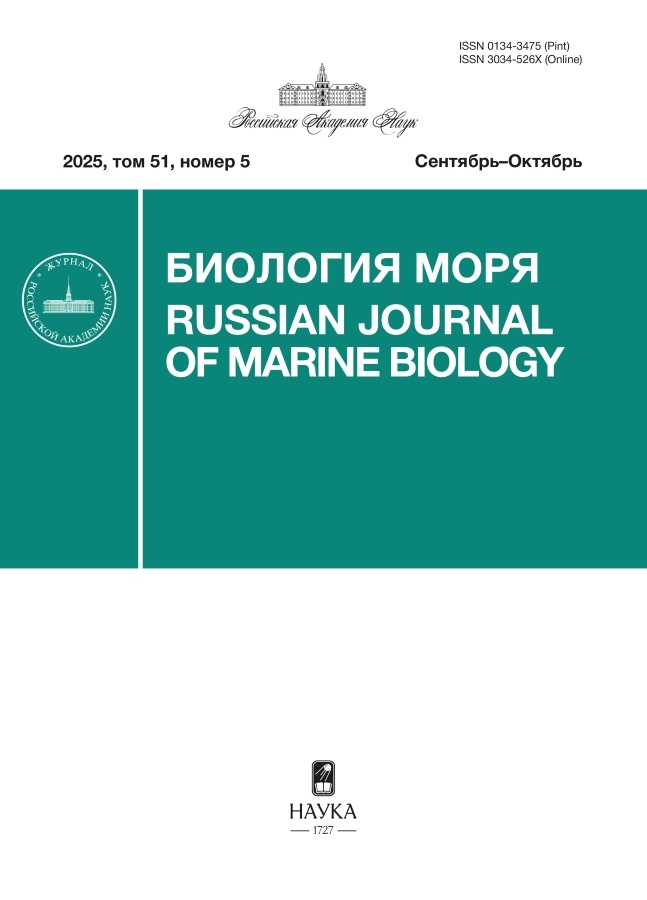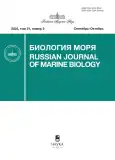Russian Journal of Marine Biology
ISSN (print): 0134-3475
Media registration certificate: ПИ № ФС 77 - 74515 от 24.12.2018
Founders: Russian Academy of Sciences (RAS); Far East Branch of RAS
Editor-in-chief: Dolmatov Igor Yurjevich
Number of issues per year: 6
Indexation: Higher Attestation Commission list, RISC, RISC core, RSCI, Crossref, White list (3rd level).
Current Issue
Vol 51, No 5 (2025)
- Year: 2025
- Published: 15.09.2025
- Articles: 6
- URL: https://journals.rcsi.science/0134-3475/issue/view/23967
ОБЗОР
Taxonomic diversity and enzyme systems of hydrocarbon-oxidizing bacteria in the marine environment
Abstract
 239-251
239-251


ОРИГИНАЛЬНЫЕ СТАТЬИ
Applicability of pigmentation as a diagnostic tool to identify larvae of sand lances of the genus Ammodytes (Actinopterygii: Ammodytidae) inhabiting the Sea of Japan
Abstract
 252-261
252-261


Intravital genotyping of Japanese sea cucumber, Apostichopus japonicus (Selenka, 1867) (Echinodermata: Holothuroidea), for aquaculture and population genetics studies
Abstract
 262-267
262-267


Genetic diversity of the chemosymbiotic bivalve Calyptogena pacifica Dall, 1891 (Vesicomyidae: Pliocardiinae)
Abstract
 268-284
268-284


NEW DATA ON THE BIOLOGY OF VERASPER MOSERI JORDAN & GILBERT, 1898 (ACTINOPHERYGII: PLEURONECTIDAE) FROM THE COASTAL WATERS OF KUNASHIR ISLAND
Abstract
 285-292
285-292


КРАТКИЕ СООБЩЕНИЯ
Finding of mating helmet crabs, Telmessus cheiragonus (Tilesius, 1815) (Decapoda: Cheiragonidae), in the northern sea of Okhotsk
Abstract
 293-298
293-298












